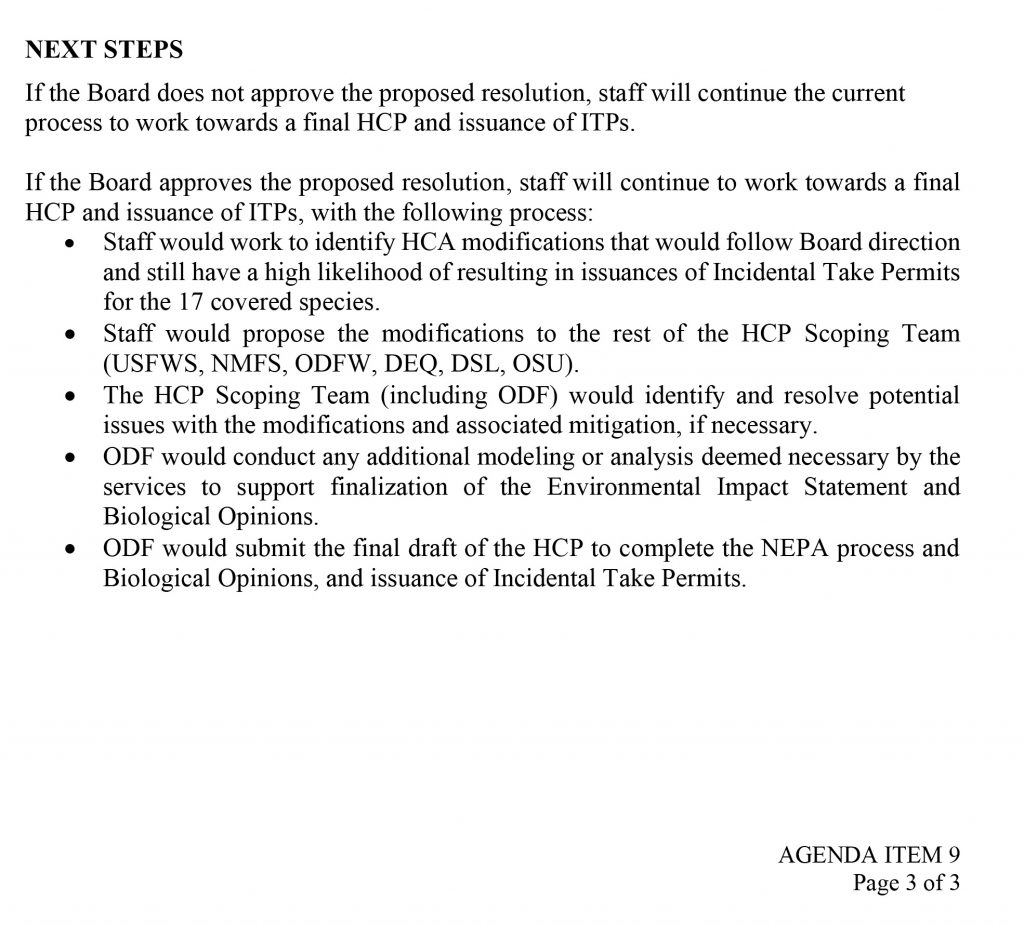News & Updates: August 2023
Board of Forestry expresses concerns over potential outcomes of draft HCP, directs staff to make meaningful changes
The Board of Forestry will meet September 6-7, 2023 to discuss, among other things, a proposed resolution to direct ODF staff to modify the draft HCP [draft resolution available below and in the board packet].
About Oregon’s State Forests
State Forests are a unique asset for the state and surrounding communities. Unlike parks or wildlife reserves, they pay for their own management and protection through sustainable timber harvests. Despite providing a multitude of benefits for all Oregonians, zero tax-payer dollars are needed to maintain and protect these lands from fire. This sustainable system has provided for generations of Oregonians.
Unfortunately, harvests on state forestland have been declining in recent decades as the agency has voluntarily reduced harvests to pursue certain habitat conservation opportunities. In some years, the department has simply failed to deliver on the harvest targets it sets for itself.
In the hopes of improving both conservation and economic outcomes on state forestlands, ODF decided to develop a 70-year Habitat Conservation Plan (HCP) with the U.S. Fish and Wildlife Service (USFW) and the National Oceanic and Atmospheric Administration (NOAA). With an HCP a landowner voluntarily enters into an agreement with the federal agencies to enhance protections for wildlife species and the ecosystems on which they depend. Once approved by the federal agencies, the landowner (in this case, the State) is granted an “incidental take permit”. With that permit in hand, so long as ODF follows the plan, it’s likelihood for lawsuits are diminished. HCPs are intended to provide landowners operational flexibility and assurances while providing for the needs of fish and wildlife.
Unfortunately, ODF developed the HCP for state forests behind closed doors with little stakeholder or Forest Trust Land Counties’ involvement. Despite concerns voiced by the counties, taxing districts and forest products businesses, the Department has opted to pursue a single, overly restrictive HCP that will convert over 57 percent of the state’s productive working forestland into a wildlife preserve.
Social, Economic, and Environmental Impacts of the Proposed Habitat Conservation Plan
Forest harvests are projected to drop 25-30% from current levels, making the Department’s HCP the most restrictive of any other HCP on the West Coast. In addition, once the HCP has reduced harvests and timber revenues, the agency, which was once self-sufficient will find itself operating at $24 million budget deficit.
There is also significant concern among the counties, taxing districts, and forest sector stakeholders, and other residents, that this HCP models the Northwest Forest Plan, which all but ended timber harvests on nearly 16 million acres of federal forestland in Oregon in the early 1990s in order to protect habitat for the Northern spotted owl. The Northwest Forest Plan decimated surrounding communities and most never recovered. 30 years later, Northern spotted owl populations continue to decline and increasingly severe wildfires threaten remaining habitat as well entire communities.
There is also concern that the HCP follows an outdated model for species protection—namely, it relies entirely on creating new habitat. As has been witnessed on federal forestland, simply creating habitat is no assurance that it will actually be utilized. According to USFW, the biggest contributor to spotted owl decline is not habitat availability, but competition from the invasive barred owl, which is abundant in NW State Forests.



